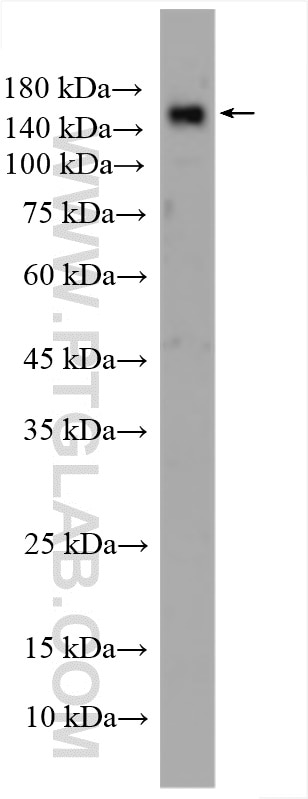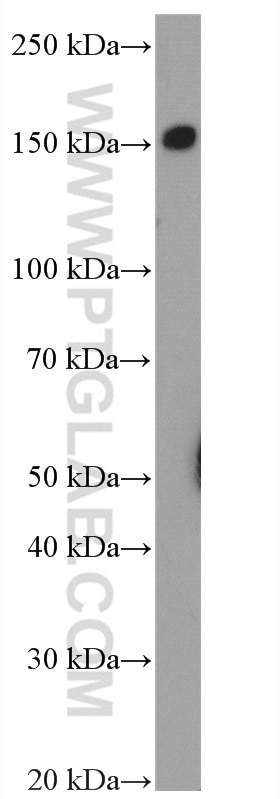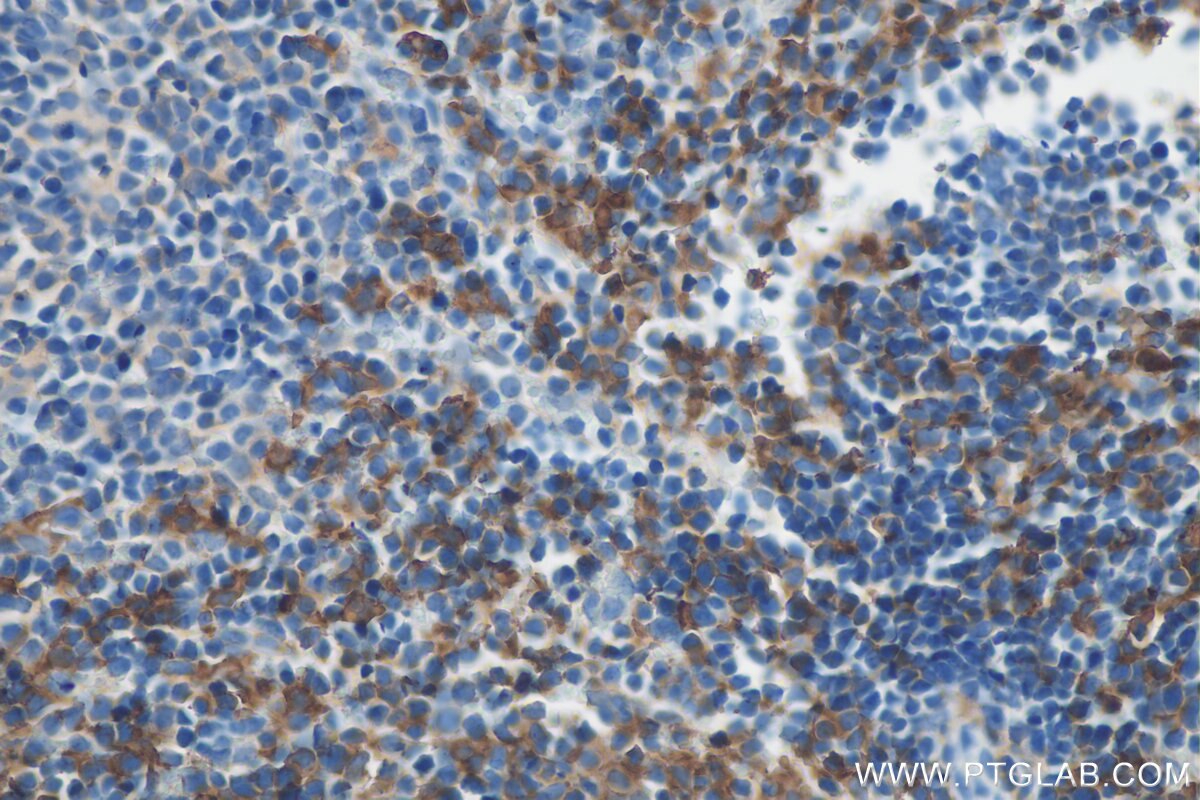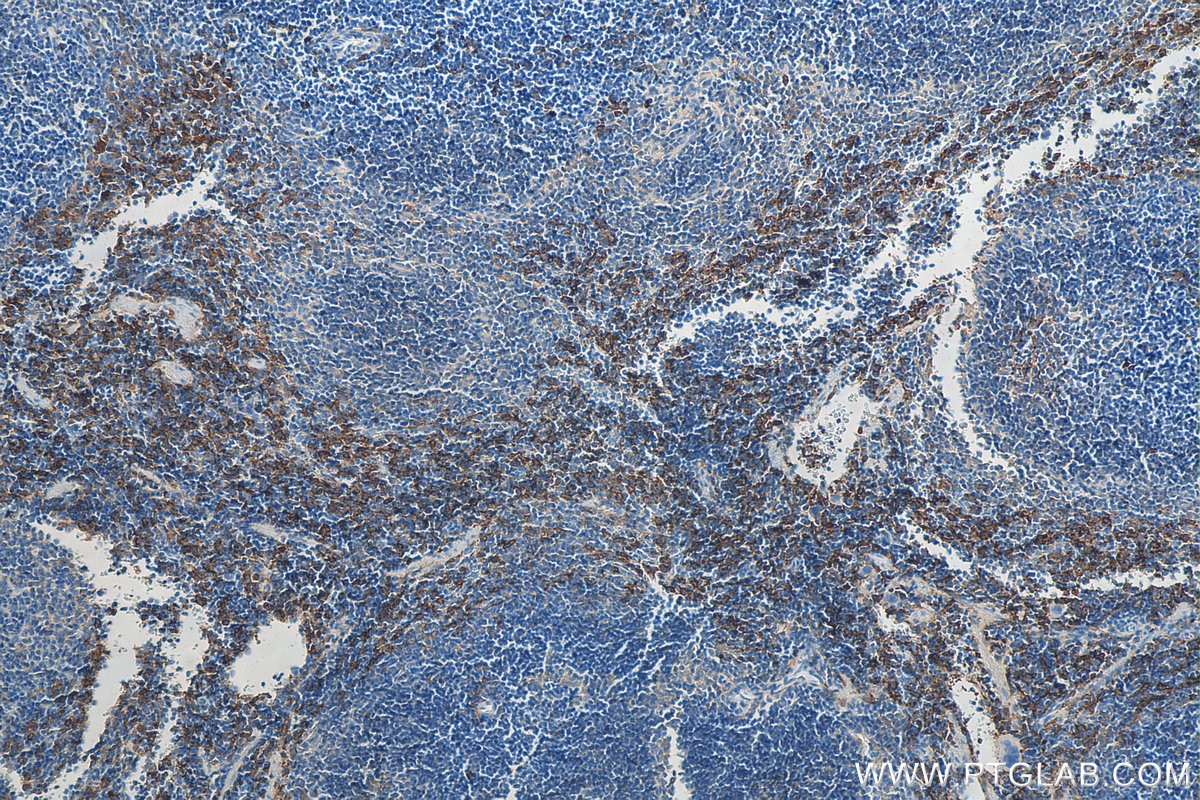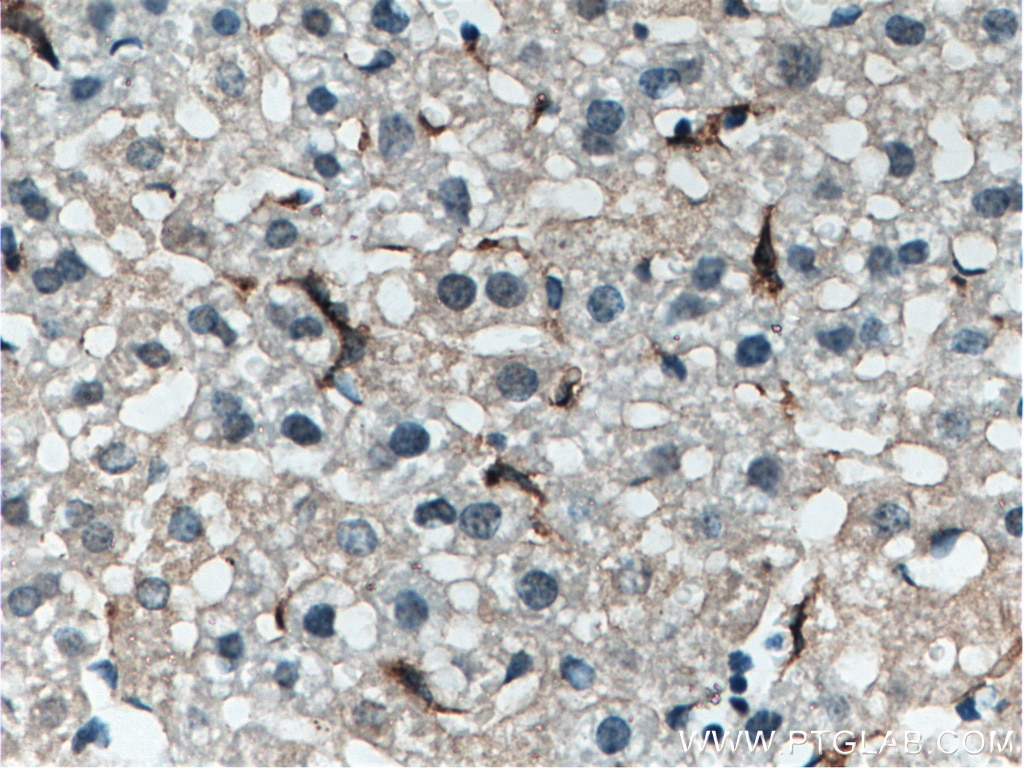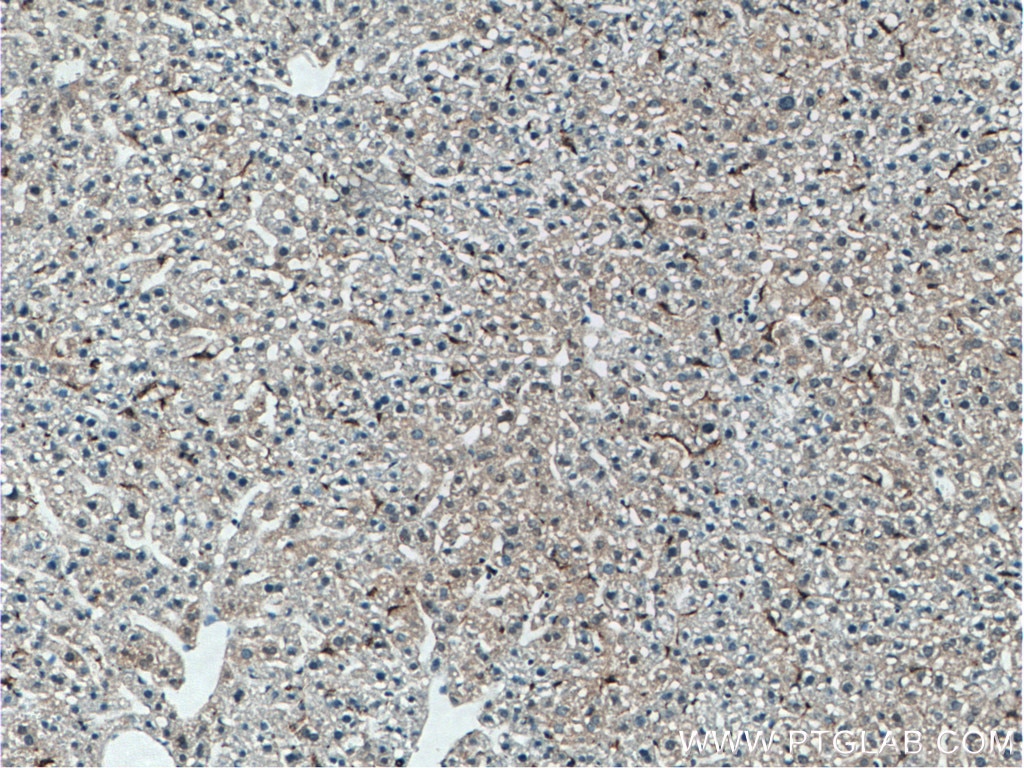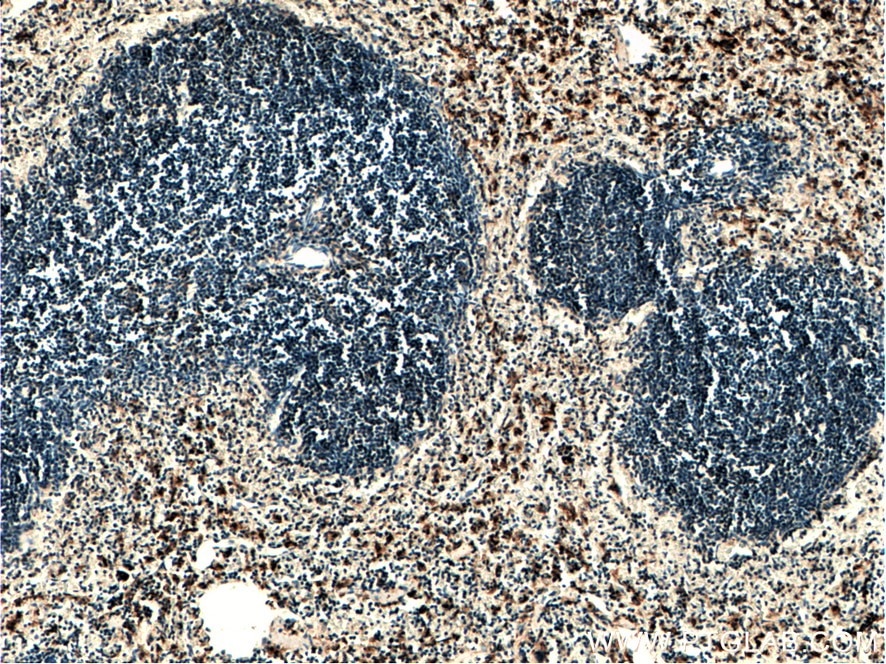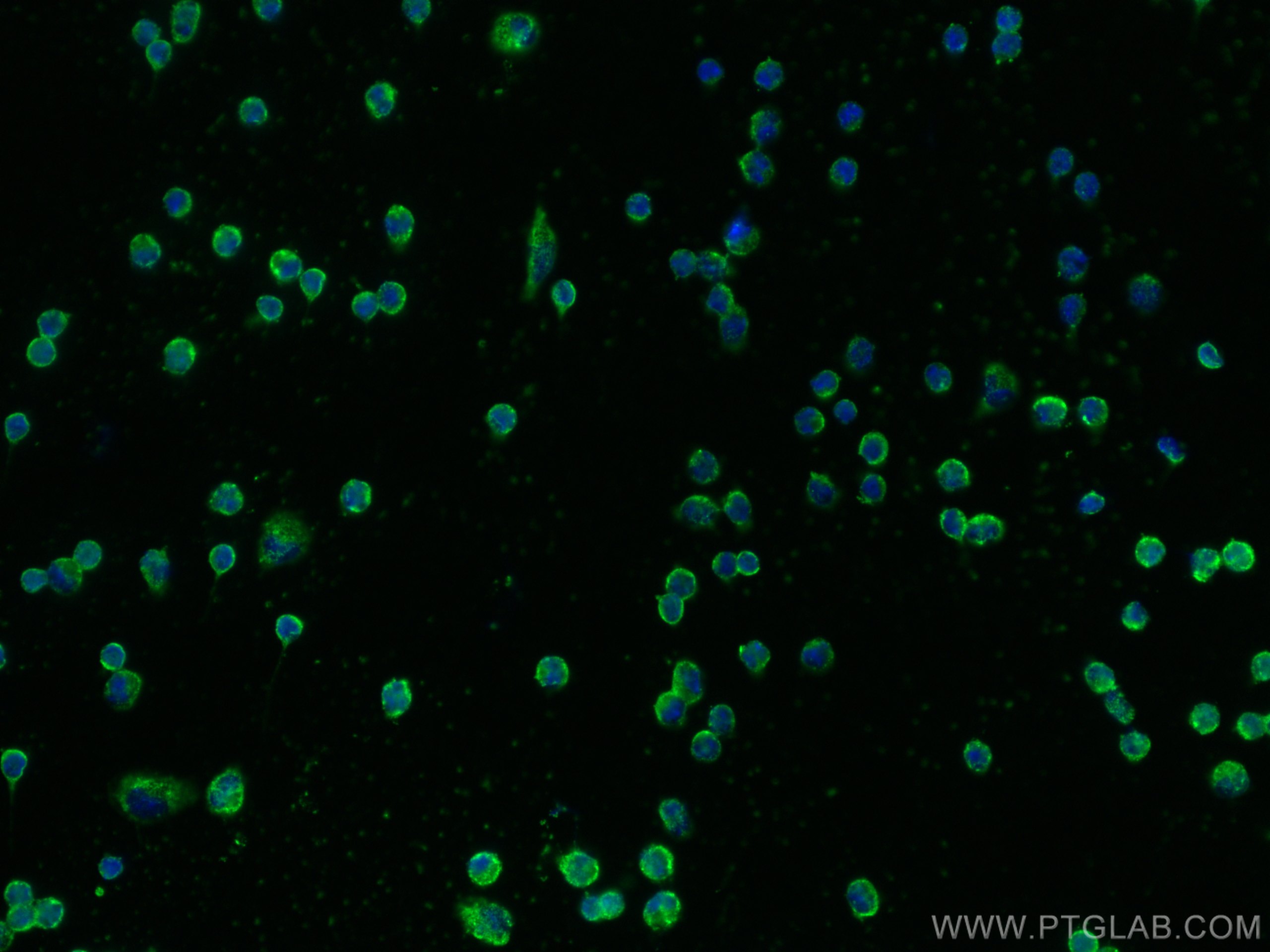Anticorps Polyclonal de lapin anti-EMR1
EMR1 Polyclonal Antibody for WB, IHC, IF/ICC, ELISA
Hôte / Isotype
Lapin / IgG
Réactivité testée
Humain, souris et plus (2)
Applications
WB, IHC, IF/ICC, ELISA
Conjugaison
Non conjugué
N° de cat : 27044-1-AP
Synonymes
Galerie de données de validation
Applications testées
| Résultats positifs en WB | unboiled RAW 264.7 cells, cellules HL-60 |
| Résultats positifs en IHC | tissu splénique de souris, tissu hépatique de souris il est suggéré de démasquer l'antigène avec un tampon de TE buffer pH 9.0; (*) À défaut, 'le démasquage de l'antigène peut être 'effectué avec un tampon citrate pH 6,0. |
| Résultats positifs en IF/ICC | macrophages péritonéaux de souris, |
Dilution recommandée
| Application | Dilution |
|---|---|
| Western Blot (WB) | WB : 1:500-1:2000 |
| Immunohistochimie (IHC) | IHC : 1:400-1:1600 |
| Immunofluorescence (IF)/ICC | IF/ICC : 1:50-1:500 |
| It is recommended that this reagent should be titrated in each testing system to obtain optimal results. | |
| Sample-dependent, check data in validation data gallery | |
Applications publiées
| WB | See 6 publications below |
| IHC | See 20 publications below |
| IF | See 12 publications below |
Informations sur le produit
27044-1-AP cible EMR1 dans les applications de WB, IHC, IF/ICC, ELISA et montre une réactivité avec des échantillons Humain, souris
| Réactivité | Humain, souris |
| Réactivité citée | rat, Humain, porc, souris |
| Hôte / Isotype | Lapin / IgG |
| Clonalité | Polyclonal |
| Type | Anticorps |
| Immunogène | EMR1 Protéine recombinante Ag25883 |
| Nom complet | egf-like module containing, mucin-like, hormone receptor-like 1 |
| Masse moléculaire calculée | 886 aa, 97 kDa |
| Poids moléculaire observé | 160 kDa |
| Numéro d’acquisition GenBank | BC059395 |
| Symbole du gène | EMR1 |
| Identification du gène (NCBI) | 2015 |
| Conjugaison | Non conjugué |
| Forme | Liquide |
| Méthode de purification | Purification par affinité contre l'antigène |
| Tampon de stockage | PBS with 0.02% sodium azide and 50% glycerol |
| Conditions de stockage | Stocker à -20°C. Stable pendant un an après l'expédition. L'aliquotage n'est pas nécessaire pour le stockage à -20oC Les 20ul contiennent 0,1% de BSA. |
Informations générales
EMR1 (EGF-like module containing mucin-like hormone receptor 1), also known as Adhesion G protein-coupled receptor E1 (ADGRE1), is a surface receptor with seven transmembrane segments that belong to the EGF-7-transmembrane family of G protein-coupled receptors (PMID: 14647991, 7601460). EMR1 expression is restricted to eosinophilic granulocytes, where expression is overlapping with the eotaxin receptor CCR3 and the immunoglobulin-like lectin Siglec-8. Absence on other leukocytes, including basophils, implies that EMR1 is a highly specific marker for eosinophils in humans and may be used as a novel therapeutic target for eosinophilic disorders (PMID: 17823986, 24530099). F4/80, the murine homolog of EMR1, is a marker of murine macrophage. The apparent molecular weight of F4/80 is 160 kDa, which is larger than the calculated molecular weight due to post-translational modifications (PMID: 7308288; 8647179).
Protocole
| Product Specific Protocols | |
|---|---|
| WB protocol for EMR1 antibody 27044-1-AP | Download protocol |
| IHC protocol for EMR1 antibody 27044-1-AP | Download protocol |
| IF protocol for EMR1 antibody 27044-1-AP | Download protocol |
| Standard Protocols | |
|---|---|
| Click here to view our Standard Protocols |
Publications
| Species | Application | Title |
|---|---|---|
Cell Res A phosphatidic acid-binding lncRNA SNHG9 facilitates LATS1 liquid-liquid phase separation to promote oncogenic YAP signaling. | ||
Acta Pharm Sin B A non-human primate derived anti-P-selectin glycoprotein ligand-1 antibody curtails acute pancreatitis by alleviating the inflammatory responses | ||
Autophagy Buddleoside alleviates nonalcoholic steatohepatitis by targeting the AMPK-TFEB signaling pathway | ||
Theranostics SPTBN1 inhibits inflammatory responses and hepatocarcinogenesis via the stabilization of SOCS1 and downregulation of p65 in hepatocellular carcinoma. | ||
Cancer Lett MicroRNA-15b in extracellular vesicles from arsenite-treated macrophages promotes the progression of hepatocellular carcinomas by blocking the LATS1-mediated Hippo pathway. | ||
